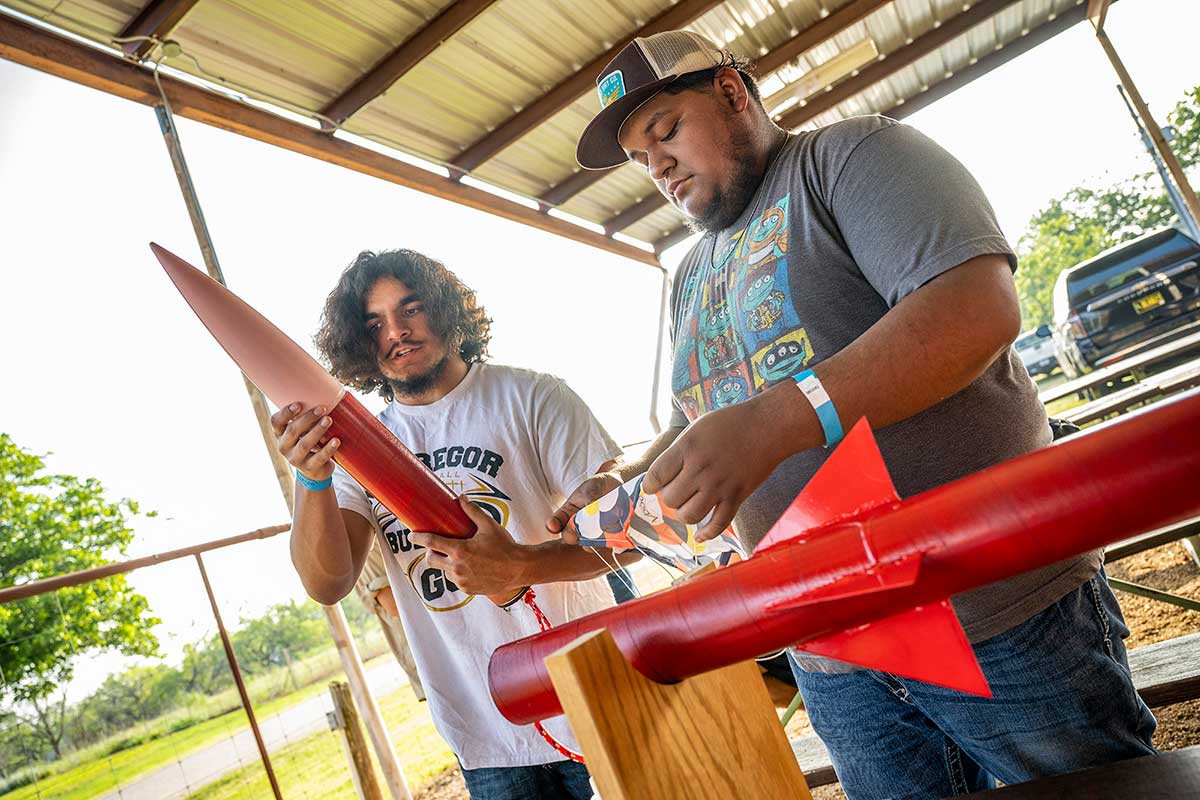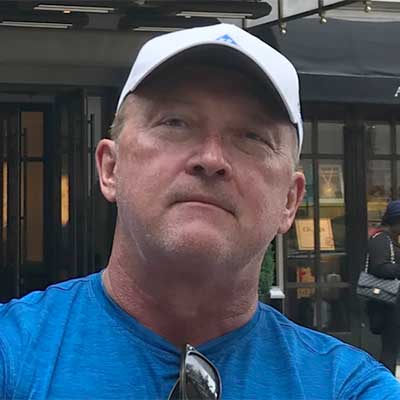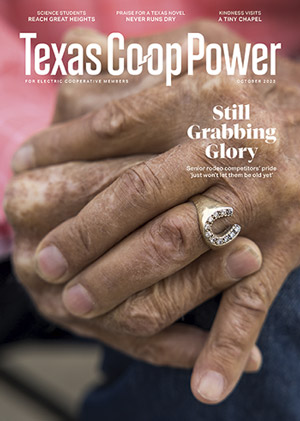In the predawn hours one Friday in May, a yellow school bus hurtles down U.S. Highway 281 with 19 students, one teacher and a lot of uncertainty.
A few things are known. The juniors and seniors from McGregor High School are heading to the town of Stonewall in the Hill Country. They will launch three rockets they have designed and built based on their own research and calculations—part of a curriculum called SystemsGo, developed by a local STEM teacher in 1996.
And that’s where the uncertainty begins.
The science, technology, engineering and math students have never done this before. The year before, a funding mishap robbed them of the chance. This school year, they’ve done and redone the math, studied and applied the physics, checked the aerodynamics, and then built the rockets based on what they’ve taught themselves, measuring 100 times if they measured once. Because of the nature of rockets, they haven’t been tested outside of computer simulations.
If that isn’t enough, weather forecasts call for afternoon thunderstorms in Stonewall, which means their launch window could be compressed.
And it doesn’t help that most haven’t slept much. Some worked through the night. Others were bothered by an overnight storm; others consumed by what-ifs.
And there are a lot of what-ifs.
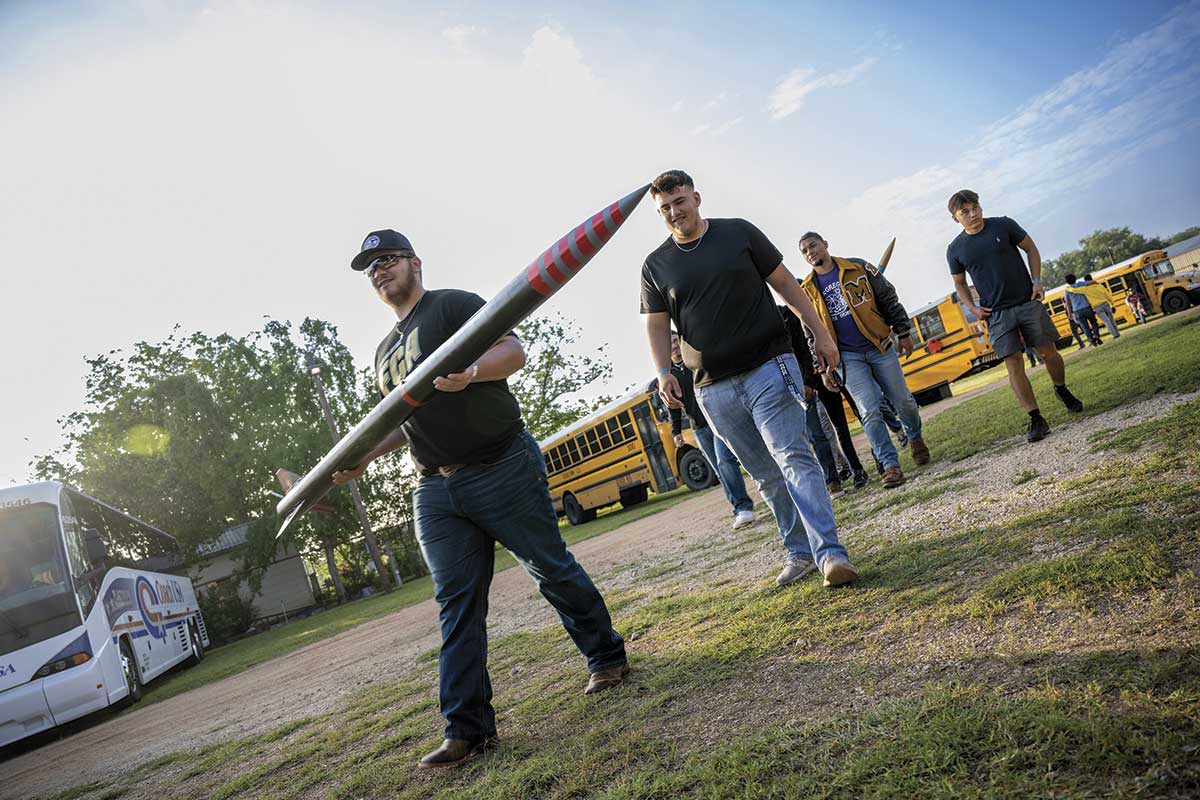
Time for McGregor’s rocket class to learn whether all its hard work will fly.
Scott Van Osdol
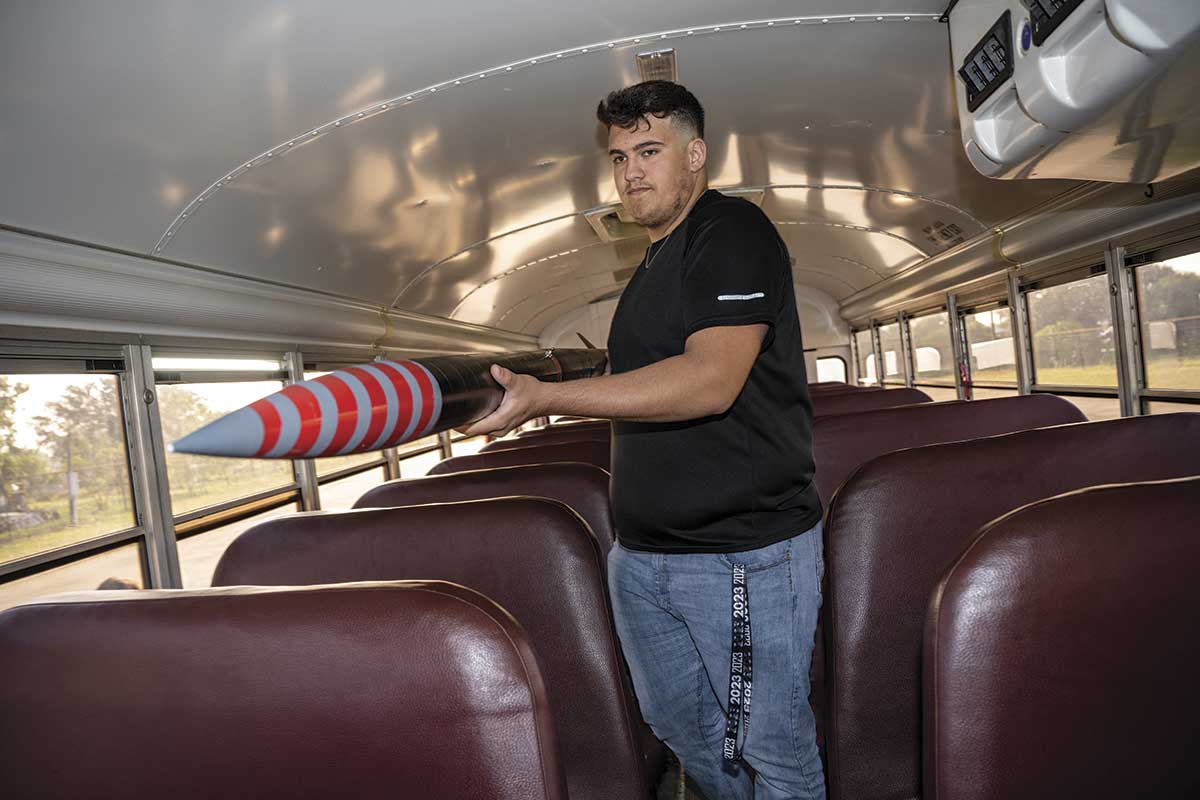
A.J. Jimenez carries a McGregor High School rocket off the bus on launch day.
Scott Van Osdol
Moments after stepping down the bus steps at the Stonewall Chamber of Commerce, where five other classes from five other schools are already gathered, teacher Johnathan Whatley is approached by one of his students. Mario Suarez is wearing a T-shirt with “Never Waste Talent” on the back and a sheepish grin.
“We have a predicament,” he says.
Of course they do.
Stage 1 | Getting Off the Ground
Dozens of high schools participate in the SystemsGo rocketry curriculum, which culminates in competitive launches at the end of the school year. Teachers leave the rocket building and problem-solving up to the students.
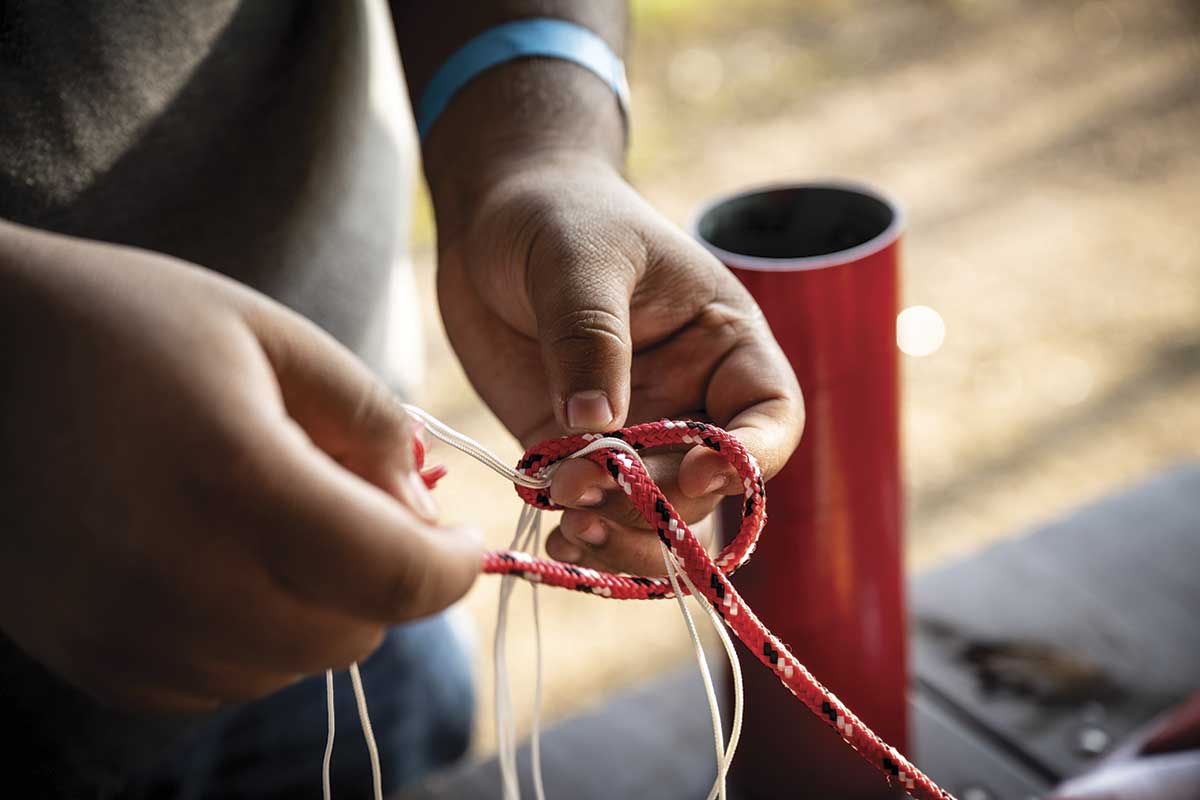
Aaron Olivera checks parachute lines.
Scott Van Osdol
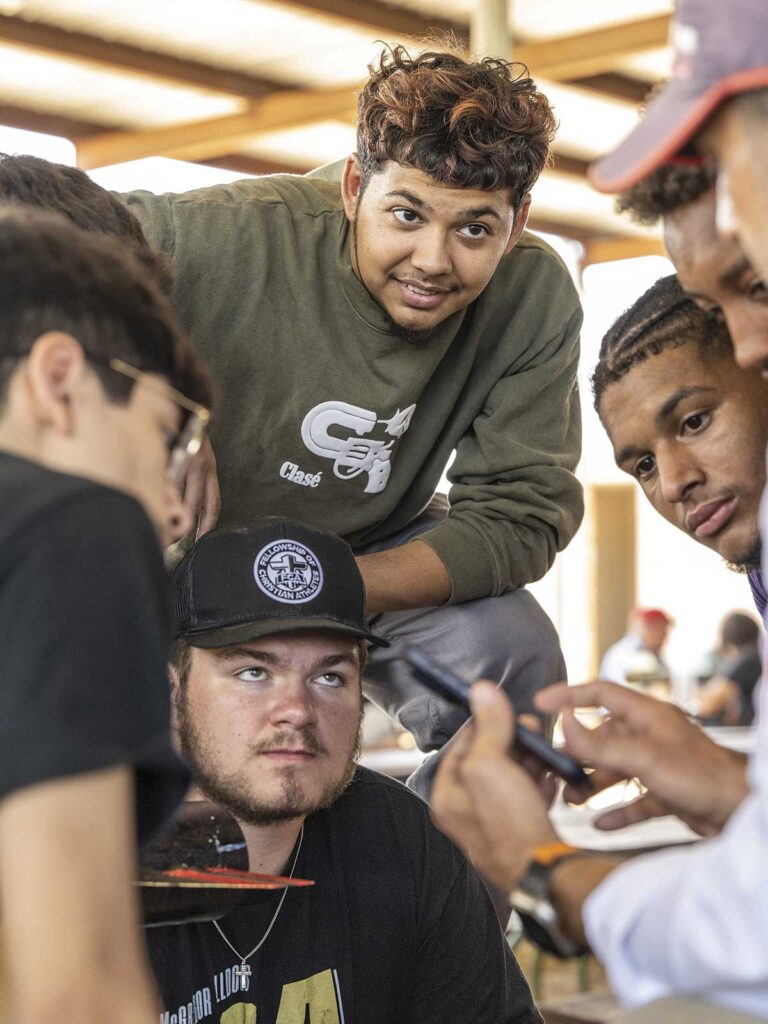
McGregor rocket club students huddle during the competition.
Scott Van Osdol
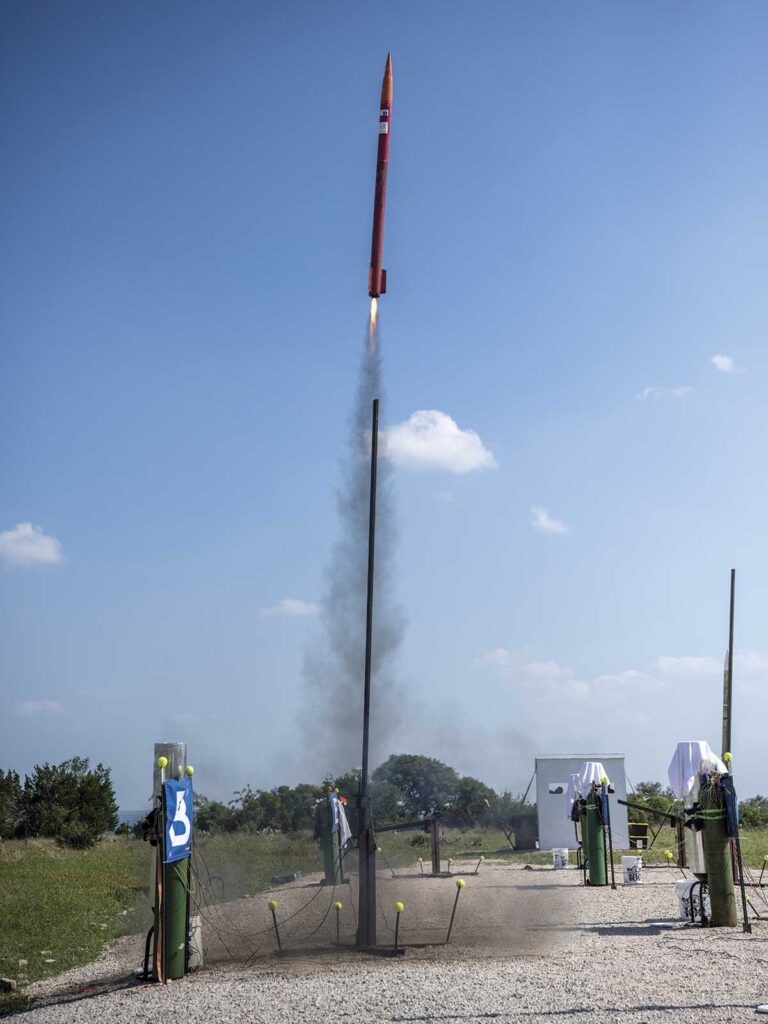
A rocket launches during a SystemsGo event in Stonewall.
Scott Van Osdol
Whatley’s go-to response is, “That’s interesting. What do you think?” The idea is for the students to figure things out on their own, which is how SystemsGo got started.
Brett Williams was a marine fisheries expert at Texas A&M University at Galveston. When he retired in 1996, he became a science teacher at Fredericksburg High School.
“I didn’t have lab equipment,” Williams says. “I didn’t really have anything. I didn’t have a curriculum. I was making it all up as I went.”
Today—27 years later—65 schools across Texas and New Mexico launch more than 150 rockets each spring at test sites in Texas and New Mexico as part of SystemsGo, Williams’ brainchild.
These aren’t toy rockets. These are full-fledged 7-foot-long projectiles, some carefully configured to carry a 1-pound payload as close to a mile high as possible or break the sound barrier. The most advanced few among them carry a payload of university research to an altitude of 50,000 feet.
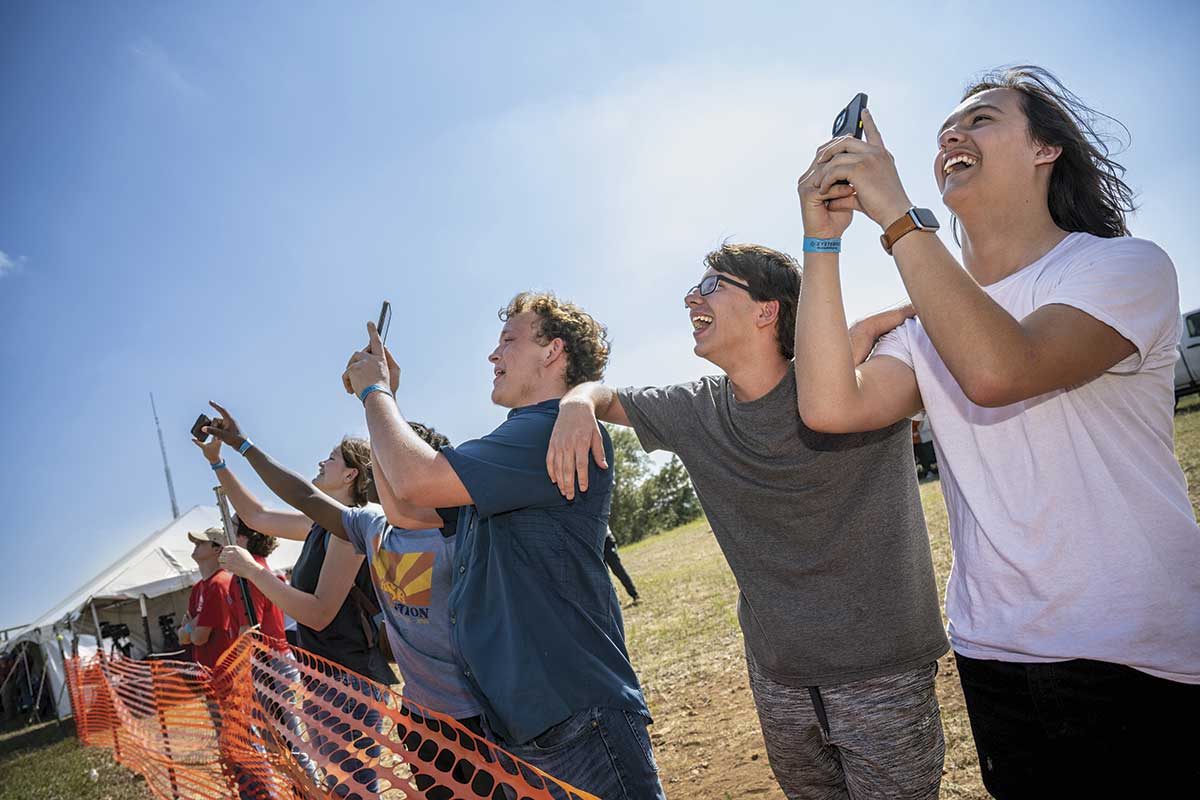
The thrill of a successful launch for members of the McGregor class.
Scott Van Osdol
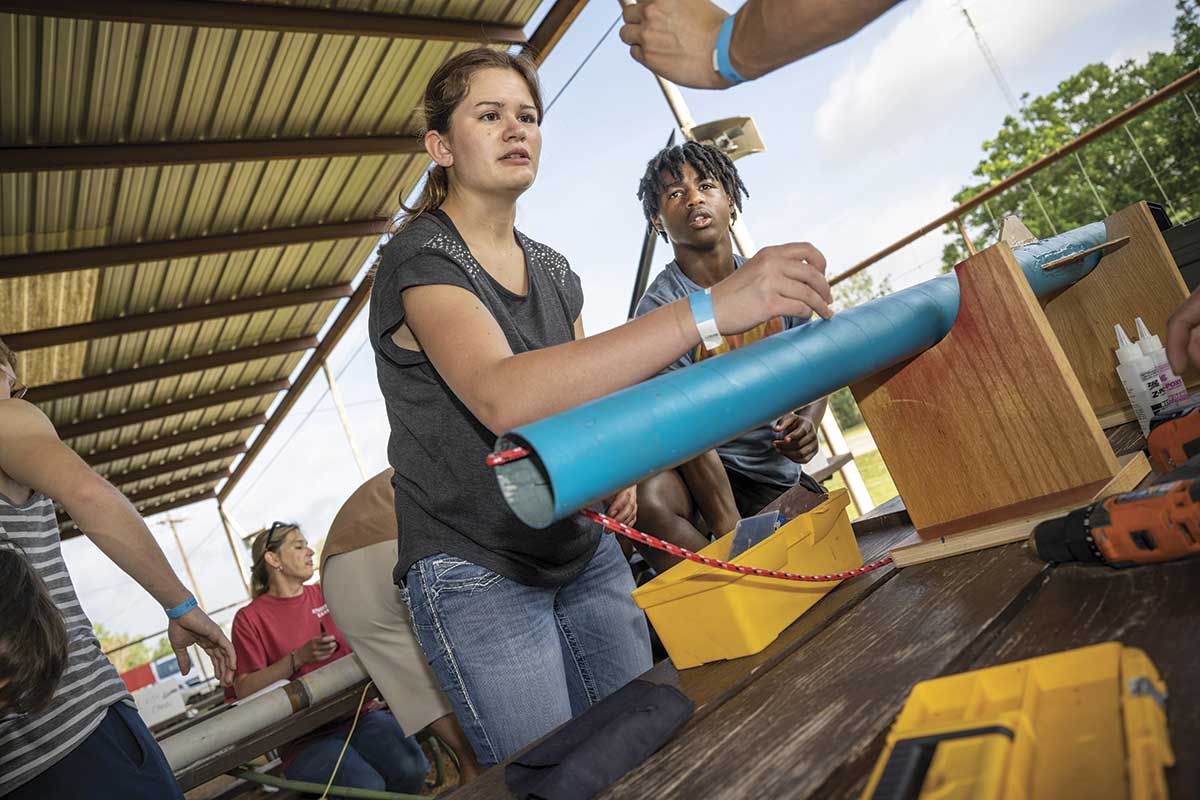
McGregor’s Kirsten Galle, left, and Isaiah Thomas prepare a rocket. Teacher Johnathan Whatley calls Galle “a mathematical whiz.”
Scott Van Osdol
Stage 2 | Preparing the Mission
A few miles down the road from McGregor is Crawford, home of SpaceX’s rocket testing facility. Occasionally, Whatley’s class hears the loud roar of ignition.
Last year’s class even got to visit. They saw the facilities and were allowed off the bus just once—to see close-up the first rocket the company landed safely.
“That was the 100th rocket they’d launched,” Whatley says. “That’s not a cautionary tale, it’s a tale of hope. Here are professionals who have it blow up on them. And then they succeed.”
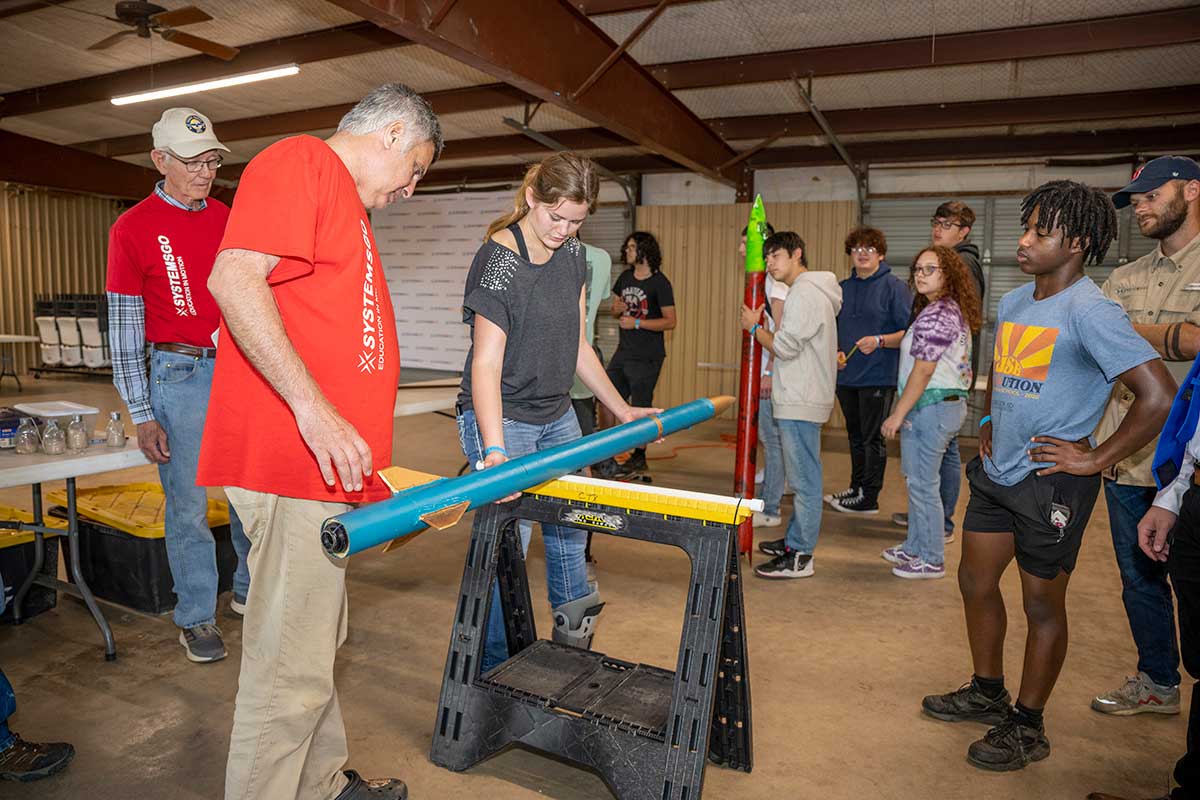
Under the guidance of SystemsGo officials, Kirsten Galle checks the balance point on one of McGregor’s rockets.
Scott Van Osdol
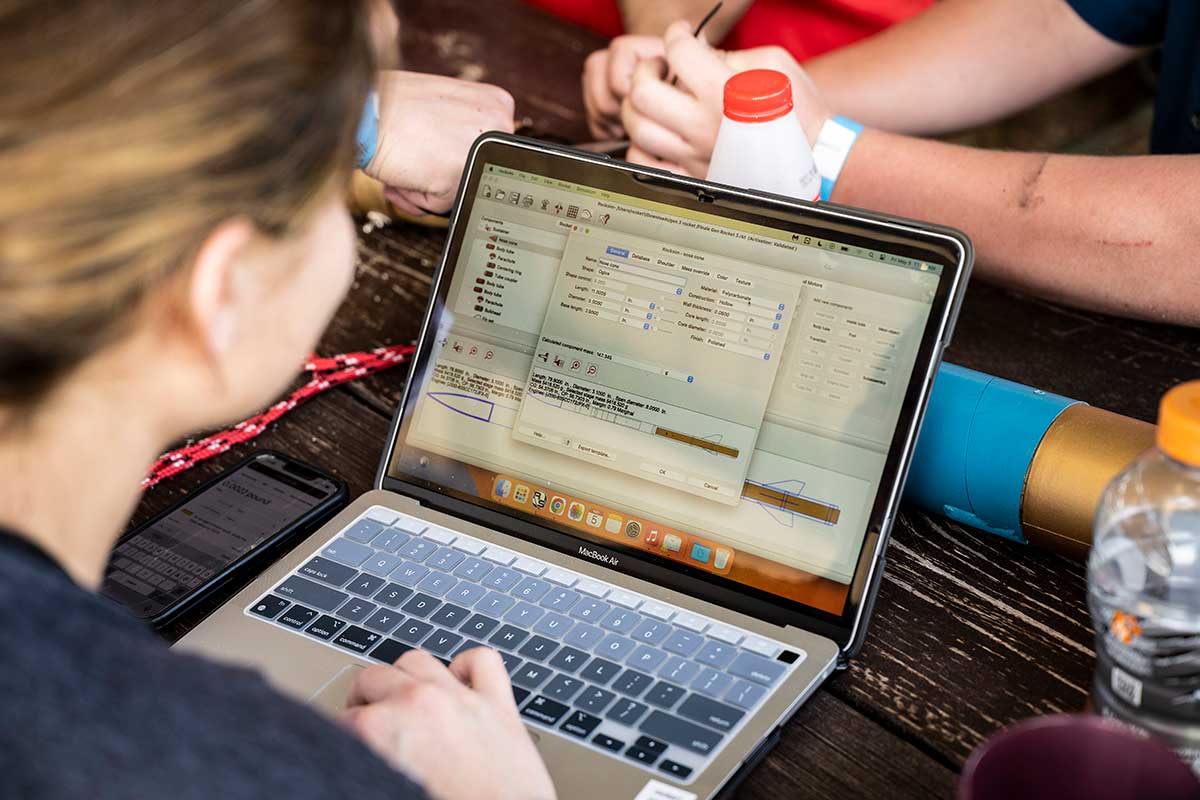
Galle reviews technical specifications for a rocket.
Scott Van Osdol
After graduating from Baylor University in 2014, Whatley applied for a coaching job at McGregor, also agreeing to teach the rockets class after he was hired.
“It made me really excited for just the possibilities of different types of education,” he says. Some students—even the brightest ones—don’t learn to think for themselves, and some need to be challenged, he says. So that’s what he does.
The fall semester focuses on the basics of flight. During the first weeks of class, Whatley dumps an assortment of rocket parts on a large table and asks the students to build a small rocket that’s fitted with a beginner’s rocket engine and launched.
“They make some pretty terrible stuff,” Whatley says. “They think the more fins the better. They get creative. Like why not? But that’s them failing—but then learning from their mistakes.”
Their second goal, Whatley says, “is to build a stable rocket.” That’s the one they’ll try to fly in Stonewall.
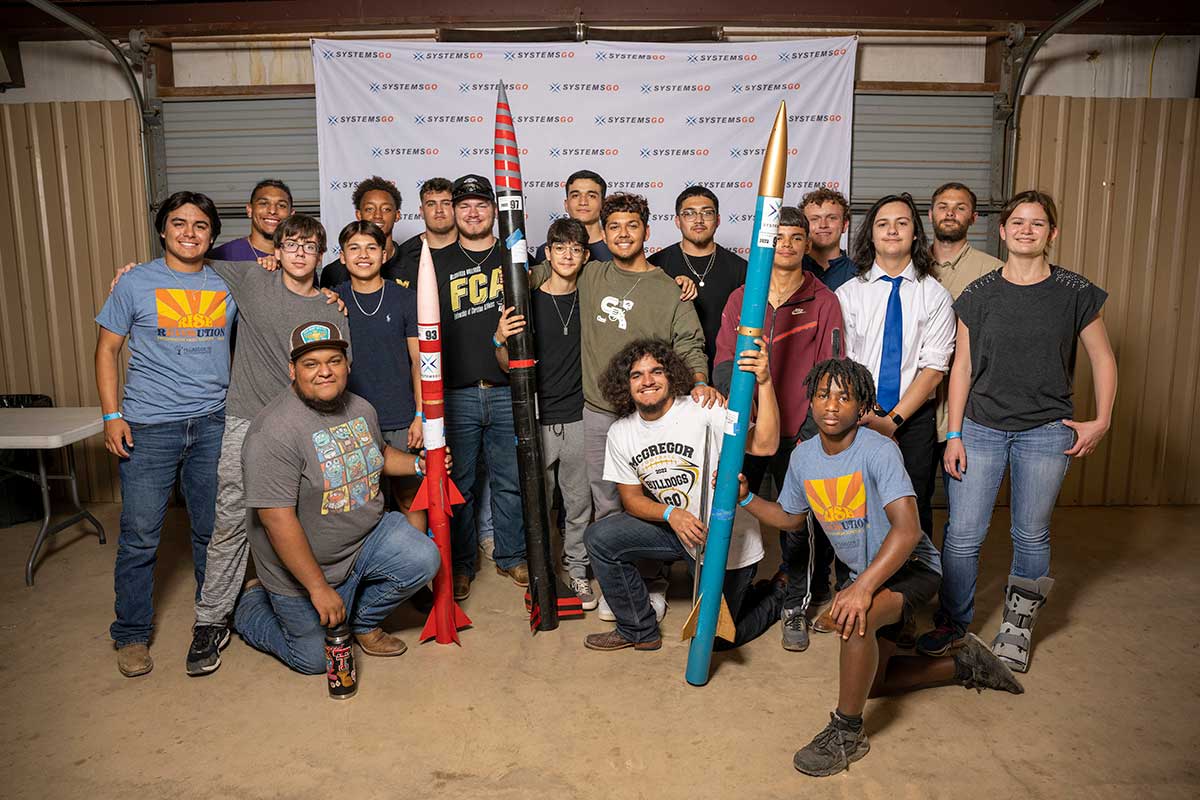
McGregor students at the SystemsGo competition. All three of their rockets flew high and straight.
Scott Van Osdol
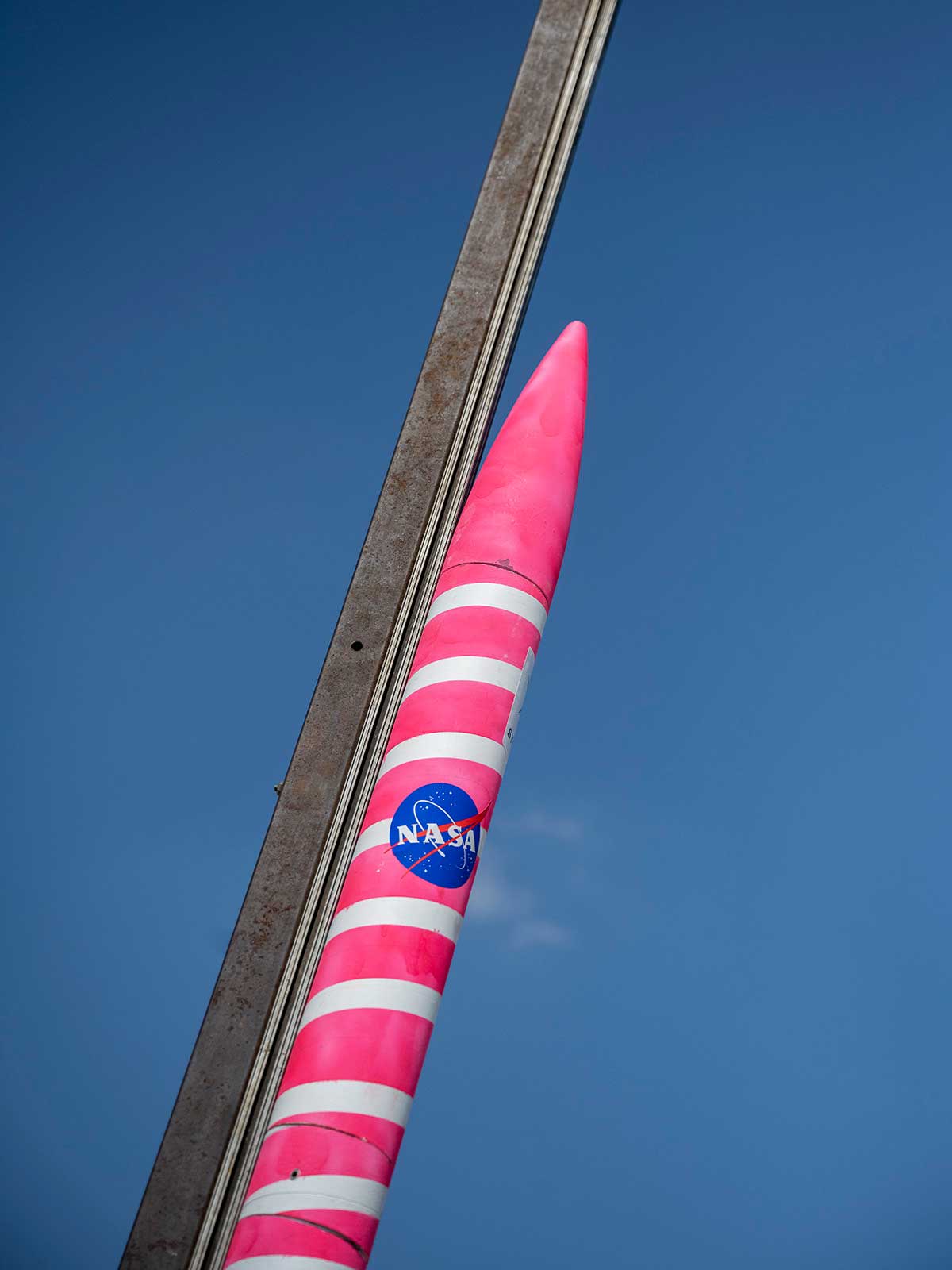
A rocket on the launch pad in Stonewall.
Scott Van Osdol
Stage 3 | The Race to Launch
It turns out the predicament Suarez mentions is minor. They forgot a section of plastic tubing vital to fueling. “It’s a chance to work on your social skills,” Whatley says to Suarez. The implication is clear: Ask around.
The group is an amalgam: football players, makers, math nerds and more. But all plan to attend college, many in technical fields.
“This class definitely reshaped the way I went about doing school,” says Suarez, who wants to be a hair stylist. “Before, I would slack in classes. But whenever I got to rockets, I understood that you can’t do that. There are deadlines that need to be met.”
For Williams, there’s more than just hard work, or even serendipity, at play with SystemsGo. He recalls cold calling a rocket parts company only to unexpectedly catch the CEO at lunch, reading an article about the program as he ate. He was a yes.
And there was a real long shot—dialing the Pentagon from the middle of nowhere, hoping to find someone to ask about borrowing some launch technology. He reached a general’s adjutant, who was in Fredericksburg the week before for a presentation. Impressed, he connected Williams to the general, who said, “I know I’m supposed to say no, but this guy tells me I have to say yes.” And he did.
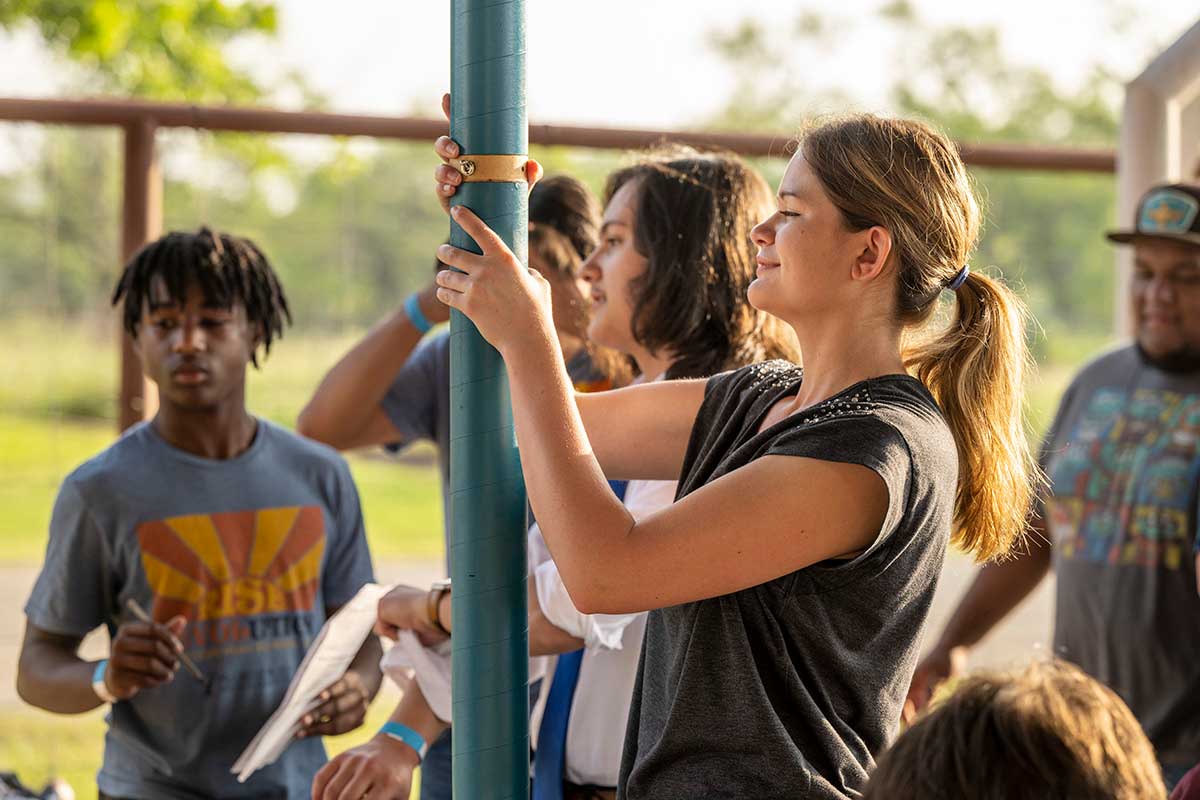
From left, Isaiah Thomas, Marcus Martinez and Galle assemble a rocket.
Scott Van Osdol
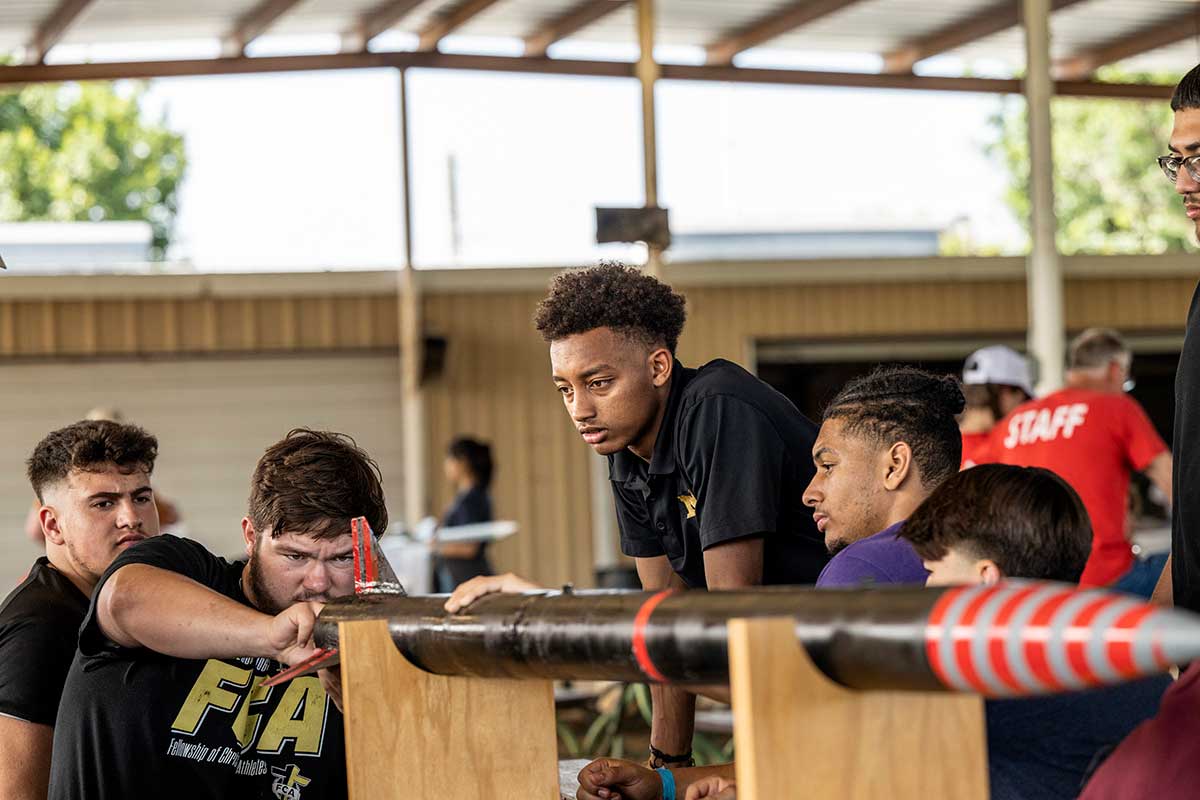
From left, A.J. Jimenez, Carter Chandler, Darieus Dixon and Gerald Caufield check the installation of a rocket’s engine.
Scott Van Osdol
Stage 4 | Launch, Recovery, Retrospection
The storms do not materialize in Stonewall. After much back and forth with officials examining the rockets, a few close calls, and frantic recalculations, all three McGregor rockets pass muster: They launch and fly straight and high.
None earns an award, though one just misses reaching the 1-mile threshold. The students don’t know that as they bus back to McGregor, stopping at the Chick-fil-A in Marble Falls for a celebratory feast.
Once back, the teams do their post-launch analyses, looking at what they did right and what they didn’t. Uncertainty will be met with experience next year, when the nucleus of 11th graders returns for a chance to improve.
Schematics will be honed. Math will be tightened. Construction will be polished.
Next May, the sky’s the limit (weather permitting).
